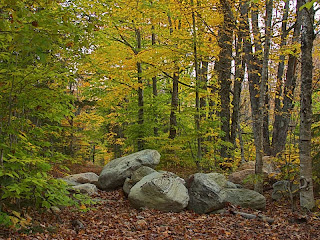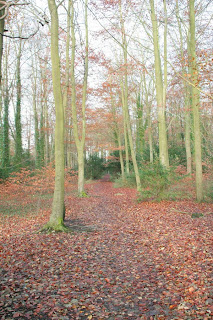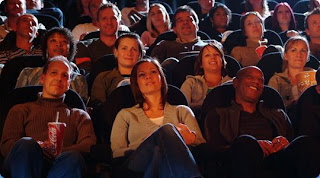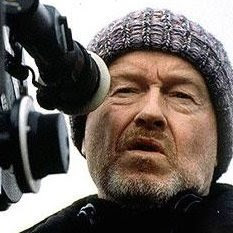Thursday, 26 February 2009
Wednesday, 28 January 2009
Shot List and Prop List.
Shot 1
Close up Shot of a Clock (not too much light, out on fade)
Shot 2
Shot of an Ash tray with a Half smoked cigarette (out on fade)
Shot 3
Close up of a smashed photo frame picture
Shot4
Papers mixed up on a desk (some about to fall off, out on fade)
Shot 5
Slowly tracks up a mans body (he is wearing black, Cuts)
Shot 6
Point of view shot, of lift doors opening (out on cut)
Shot 7
Walking pace shot, following a girls foot steps as she walks (out on cut)
Shot 8
Far away shot of girl walking towards her car in a car park (out on cut)
Props include
ClockAsh Tray and CigarettePhoto and FrameFoldersPhone
Black trousers, jumper, shirt and black shoes.
Synopsis of final idea
We had the plan for our opening scene a long while ago, but it had only been recently where we settled on a story line interpreted from the opening scene that we had made.
The Film cross links between the past and the present; the present, being an interview between a police officer and a criminal. And the past being led by the interview, telling the story of how his mental illness drove him to commit his crimes.
The opening scene begins in an office, as it pans across the office desk you gather information that adds to the suspense, such as papers being dragged, a phone off its hook, a note pad saying that he needs to meet his daughter, and Origami bird.
The shot continues to pan onto a picture in a picture frame which has been cracked, identifying his daughter to the audience. And further on, you see a dead body on the floor.
The location changes to a Café, and straight away you recognise the girl from the picture frame, looking worried that her dad has not come to meet her. Once again, relating back to the notices on the note pad. A man places the bill on her table, with an Origami Bird, consequently relating back to the paper craft in the original office.
After the opening scene the next scene would probably continue from the events this criminal is exposing to his interrogator.
Tuesday, 4 November 2008
Camera Angles
Bird’s-Eye view
This is a shot, directly above the action, this is very unnatural and a very expensive angle to film from. Objects from an angle such as this may be unrecognisable at first. However this position puts the audience into an almost godlike position looking down on the characters. Hitchcock and his admirers such as Brian de Palma are fond of this particular shot.
High Angle
Not as extreme as a bird's eye view. The camera is elevated above the action using a crane to give a general overview however for our low budget film a simple ladder could be used to achieve this angle. The object or character often gets swallowed up by their setting - they become part of a wider picture.
Eye Level
This is a very good angle to capture an actors full facial expression, this could also be used for suspenseful moments. The camera is usually placed five or six feet from the ground to achieve this level.
Low angle
This is particularly good if you want your audience to feel overwhelmed by the camera on the screen, as they are looking down towards the camera, unlike the bird’s eye view where the audience are in the dominating position. This particular angle could be used to film a character running, with just the shot of his/her feet.
Oblique/Canted Angle
This is when the camera is held at tilt, i.e. not horizontal from the ground. This is usually used for the eye view of a character. This is common in thriller movies, where the animalistic character is watching its prey through a push. This angle is usually used with out a tri-pod so that the hand can get a realistic angle and movement.
My personal evaluation
I feel that the preliminary task was very straight forward and challenge less; this was due to our planning and story boarding which allowed us to work with a very ‘step by step’ attitude.
As I was an actor in our piece I felt that I contributed to the task immensely and I was able to focus on the task instead of having a good time with my friends. I also observed the continuity of our location and myself and my partners clothing; for example, the tags on my trainers were out at the beginning of the scene, it was mandatory that they stayed the same throughout the scene.
I also took part in the filming process, to get to grips with the camera, but as I had used a camcorder for family and home video’s, I was not overwhelmed with what buttons to press and when.
Finally, the editing process was probably the most challenging part of the task, as the software was very confusing and not very ‘user friendly’ for first time editors. But after a little bit of practice I was able to get used to the software.
For our Thriller opening scene I will ensure that I include myself to an even greater deal, perhaps spending more time on the filming area, rather than laying a dominant part of the film. I feel that I have learnt some skills which I can then continue onto future projects.
A Checklist to perfection
Before filming it is essential that a checklist is created, this will consequently avoid mistakes and wastage of time on the filming day. Here a few subjects that my group will need to focus on before we actually start the filming process.
Costume, what are the characters wearing and what will it bring to the thriller, also, how will it portray the characters personality and back ground, for example a business man would wear a suit whereas a homeless man may wear a rough old coat with some ripped tracksuit bottoms and sandals.
Lighting/time of day, this is very important for filming and it can also affect the continuity of a film. We will need to decide on what time of day we should film, should it be daylight, to get away from the stereotype of a thriller opening and to allow a wider range of atmospheric techniques. Or night time, which would allow us to introduce animalistic characters and a higher degree of suspense and thrill.
Props, what props will be used in the scene and how will it enhance the story and support the characters in the scene, are certain props necessary to help the scene progress, such as mobile phones of transport such as bicycles.
The set, this could also be affected by the public, should we film in a busy area with the risk of losing our continuity, or should we film in an enclosed area where continuity is infrequently tested. In addition, a public place could affect the sound, for example, if you wanted a very quiet moment whilst filming, but wanted to include diegetic sound, then a busy high street such as Oxford Street would not be a good location, due to car noises etc.
Memento (2000)
The director also uses no dialogue in this scene, allowing the audience to focus on the event rewinding; also as dialogue may introduce the character too early into scene, as this section is very slow and reflective. In addition the director has also decided to prevent the audience from knowing where they are, this is due to very close shots to the characters face, the blood and the bullet. Consequently blocking out the set, which keeps the audience wanting to find out more, instead of the set being presented very elaborately like ‘The Dark Knight’.
'MEMENTO' By Christopher Nolan
Batman: The Dark Knight 2008
The director has purposely decided to hide the faces of the bank robbers, leaving facial features and facial expressions out of the picture. This suggests that the robbers are worthless and their identity is not necessary, especially as they are each being killed one by one.
From the middle of the opening scene a non-diegetic ticking sound begins to play a part in the scene, this sub consciously makes the audience feel that a saviour is on its way and the criminals must depart. But instead the criminals get away in a very smooth and unobvious manner, which frustrates the audience consequently ticking a box for a thriller characteristic, as it invites the audience into the movie with their own emotions
The Matrix (1999)
The Director also uses music to heighten the action; however it is not continuous as there large pauses with diegetic sound such as breath and sudden crescendo music to intensify the moment. This is also being used with moments of slow motion as Trinity is running away from the police officers.
Another idea I gathered from this opening scene is the way in which the agents crash the vehicle into the phone booth which trinity is standing in, but the director decided to avoid showing impact to her body. Consequently, allowing the audience to have a moment of suspense as they wait to find out if she is dead or alive.
Preliminary Task Evaluation
Preliminary Task
When we were assigned to create a short preliminary scene I was excited to start using the cameras and editing equipment as soon as possible. But I was not aware of the preparation before the practical area. We began by going into our groups and brainstorming some ideas such as, where we will film the scene and what the story is behind the conversations exchanged.
Straight away each of us were trying to be as creative as possible, with ideas such as filming in a public toilet, and out on the field. But we settled on the film studio which allowed us to prevent interruptions from other students, lighting and weather. We also decided to film an audition scene, in which I knock on the door, I come in and the casting director asks me what song I am going to sing. We had a clear idea of how the scene would work, so story boarding was straight forward.
When we started filming the shots did not take very long at all, and we had finished filming the whole scene in about half an hour. When I used the camera I was comfortable with what buttons to press and how to zoom as I have previously filmed holiday breaks on my own camcorder at home, so angle changes and positioning was straight forward and trouble free.
By the end of the lesson we had realised that our microphone hadn’t been on, so after we had discussed the matter we decided to film it again, the following week. We decided to change the set and film in a class room, as it provided the same benefits as the studio. Once again this was very straight forward and we were able to stick to the same story board we had prepared at an earlier date.
We were finally aloud to start editing our preliminary scene. This was probably the most technical and mind challenging step that we had to take. Whilst watching the video over, we decided on the shots that we did not want to include in our text. But the hard bit was the exact second that you wanted to ‘cut in’ and where to ‘cut out’ and how to drag them and sequence them together, but after a little while we were able to get used to the buttons that needed to be pressed and how to put the scene together.
As you can see from the video below our scene came to an acceptable standard. I personally liked the establishing shot which was smooth and followed on to the actual scene, instead of just an establishing shot and a cut. I also liked the way in which the door opened and there was an unfocused shot of Lizzy at her desk. However their was a fault with the continuity of sound in the scene, but due to some editing we were able to make it sound natural as the sound continued onto another shot and faded out. In addition, the final area of the scene where the camera zooms into my face, it would have been more professional if we used a non-Diegetic sound instead of Alex singing the tune in the background.
Wednesday, 22 October 2008
Filming Locations

 The City
The CityIn many thrillers the use of a city can introduce a dark, cold atmosphere to the film. It primarily works with the sub genres of Crime, Action and spy Thrillers, working with the police. The use of The City will allow my group to use buildings, ally ways and even car parks to allow our film to look and feel as professional as a real blockbuster movie.
 Posted by Jordan Shaw
Posted by Jordan Shaw
What is your target audience?
Every film has a target audience, but it is our job as a group to know specifically who they are. Without a target audience our thriller will not communicate effectively. You can start by guessing, however this guess must be informed. Expert distributor Tony Cianciotta once said that when he is about to buy a film he’ll ask himself: “who would stand in a lineup outside, at night, in January to see this film?” you can then picture the lineup, and that will show you your target audience.
In addition the people in the line are within a particular age range and watch or read similar media, consequently advertisement will be observed from a similar range of magazines, television channels etc. You can also picture previous movies that people have seen, and the areas of those movies which worked, which didn’t work and why. You can then educate yourself on your target audience and film with purpose.
Typically, age ranges break down as follows

Kids 5-11
Teen 11- 14
Teen 13-16
17-21
18-24 and 18-34
25-54
54+
These age ranges are important to film makers as a movie which will entertain a 5 year old will not appeal to a 14 year old. The more precisely you have defined your audience, the better chance you have of creating a movie which they want to see. For most genres including thriller, the 18-24 and 18-34 age range makes up the largest movie selling, target audience. In which it is the core of big audiences and stiff competition.
Posted by Jordan Shaw
Thursday, 9 October 2008
Alfred Hitchcock.
Alfred favoured the use of suspense over the use of surprise, he preferred to show things to the audience which the characters in the film do not know, and then artfully build tension around what will happen when the characters finally learn the truth, instead of assaulting the audience with frightening things. Hitchcock often used this aphorism to support his opinion- "There's two people having breakfast, and there's a bomb under the table. If it explodes, that's a surprise. But if it doesn't..."
 Ridley Scott
Ridley ScottRidley Scott is infamous for his stylish visuals and an obsession for detail. He was born on the 30th of November 1937. He is an Academy Award nominated and Golden Globe, Emmy Award and BAFTA Award winning director and producer. Famous for blockbusters such as 'Gladiator' (2000) 'American Gangster' (2007) and 'Alein' (1979).
Ridley Scott favours the use of slow pacing, until the action sequences which are enhanced with the use of quick, rapid edited shots. Ridley also enjoyes using the technique of sound or music to build tension, seen in 'Alien' with hissing steam and beeping computers.
Posted by Jordan Shaw


